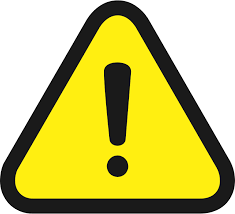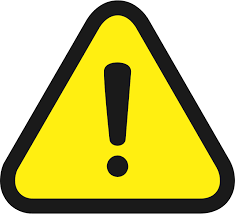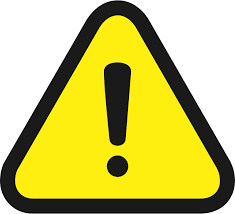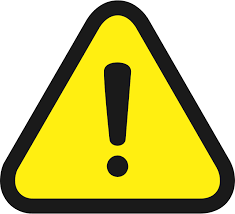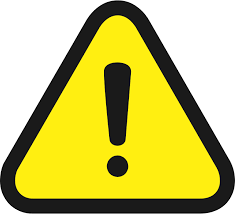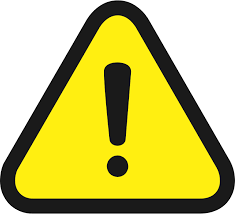Title Page
2.0 Vehicle information
-
VIN NUMBER:
-
BODY NUMBER :
-
FLEET NUMBER:
-
KILOMETRES:
-
INSPECTION LOCATION:
- Volgren
- Rochedale
-
INSPECTED By:
-
FIRST INSPECTION DATE:
-
FINAL ACCEPTANCE DATE:
-
REGO:
External Inspections
3.1 Paint Work
-
Check colour scheme is as per Council's requirements.
-
Check workmanship, paint free from scratches or damage
3.2 Glazing
-
Check all glass is free from scratches or defects.
-
Check all Sikaflex joints to ensure neat and uniformity appearance.
-
Check all EMG exit decals are located on the correct window ( refer doc : $%#$%#$%).
3.3 Panelling
-
Check all side panels are scratch, dent and defect free .
-
Check alignment of panels against other surfaces.
-
Check opening and closing of each hatch/service compartment for correct latching and operation.
Metro OS Compartments
3.4 (1) Front service hatch
-
Check routing of all harness’ in and out of the compartment for security and contact points.
-
Check routing of all hoses in and out of the compartment for security and contact points.
-
Check general tidiness and condition of the compartment.
-
Washer bottle full / decal fitted
-
Wiper linkages secure and correctly installed
-
Tow pin fitted
-
Air charge point installed
3.5 OS (2) power steering compartment
-
Check routing of all harness’ in and out of the compartment for security and contact points.
-
Check routing of all hoses in and out of the compartment for security and contact points.
-
Check security and attachment of any insulation or fire protection material.
-
Check general tidiness and condition of the compartment.
-
Check fluid level is correct within sight glass.
-
Check routing and attachment of any fire suppression lines.
3.6 OS (3) Slow charge compartment
-
Check routing of all harness’ within the compartments are properly sealed, secured and protected against rubbing.
-
Check security and attachment of any insulation or fire protection material if fitted.
-
Check general tidiness and condition of the compartment.
-
Check reflective tape fitted to back of access door.
3.7 OS (4) Fire suppression compartment
-
Check routing of all harness’ within the compartments are properly sealed, secured and protected against rubbing
-
Check security and attachment of any insulation or fire protection material if fitted.
-
Check general tidiness and condition of the compartment.
-
Check routing and security of fire detection or suppression lines.
-
Check and confirm bottle gauge indicators green.
-
Check and record date of compliance tag.
3.8 OS (3 & 5) Traction motor compartments
-
Check routing of all harness’ within the compartments are properly sealed, secured and protected against rubbing.
-
Check security and attachment of any insulation or fire protection material if fitted.
-
Check general tidiness and condition of the compartment.
-
Check routing and security of fire detection or suppression lines.
3.9 OS (6) 24V battery compartment
-
Check 24V batteries are secure in cradle
-
Check quick release catches on cradle working correctly.
-
Check cradle safety catch is fitted and working.<br>(if the catch is down the compartment door should not close and vehicle shouldn’t be able to move).<br>
-
Check general tidiness and condition of the compartment.
-
Check routing of all harness’ within the compartments are properly sealed, secured and protected against rubbing.
-
Check battery isolation switch works
Metro NS Compartments
-
Metro OS Compartments
3.10 NS (1) air compressor compartment
-
•Check routing of all harness’ in and out of the compartment for security and contact points.
-
•Check routing of all hoses in and out of the compartment for security and contact points.
-
•Check security and attachment of any insulation or fire protection material.
-
•Check fluid level is correct within sight glass.
-
•Check routing and attachment of any fire suppression lines.
-
Record current operating hours
3.11 NS (2) heater compartment
-
•Check routing of all harness’ in and out of the compartment for security and contact points.
-
•Check routing of all hoses in and out of the compartment for security and contact points.
-
•Check security and attachment of any insulation or fire protection material.
-
•Check fluid level is correct within sight glass.
-
•Check routing and attachment of any fire suppression lines.
3.12 NS (3) fire extinguisher compartment
-
Check general tidiness and condition of the compartment.
-
Check fire extinguisher is fitted, and compliance plate date is correct.
-
Check and record compliance date
4.0 Tyres
4.0 Check tyre pressures
-
Ensure the tyres are within tolerances using the on board monitoring system
4.0 Check wheel stud tension set at 600 Nm
-
Front axle NS
-
Front axle OS
-
1st drive axle NS
-
1st drive axle OS
-
2nd drive axle NS
-
2nd drive axle OS
-
Rear steer axle NS
-
Rear steer axle OS
5.1 Underfloor inspection (front carriage)
-
Check routing of all harness and piping are properly sealed, secured and protected against rubbing
-
Check underfloor deadening for any unprotected or exposed areas.
-
Record front steer axle type plate data
-
Check condition of all steering linkages, joints, and threaded connections. Ensure steering components fasteners (steering gear/ angle drive) are fitted securely and are free from damage.
-
Check front axle air bags for leaks and signs of damage
-
Check front axle exhaust ports on any valves are free from paint / masking tape or under body sealer
-
Check front axle suspension levelling sensor is, free from obstructions, damage and that the cable is routed properly.
-
Record front drive axle plate data.
-
Check both axles and axle connections points are secure.
-
Check exhaust ports on any valves are free from paint / masking tape or under body sealer.
5.2 Underfloor inspection (second carriage)
-
Check routing of all harness’ and piping are properly sealed, secured and protected against rubbing
-
Check underfloor deadening for any unprotected or exposed areas.
-
Record 2nd drive axle type plate
-
Check the rear axle and axle connection points are secure
-
Check 2nd drive axle air bags for leaks and signs of damage.
-
Check exhaust ports on any valves are free from paint / masking tape or under body sealer
-
Check condition and mounting of the bellows.
5.3 Underfloor inspection (third carriage)
-
Check routing of all harness’ and piping are properly sealed, secured and protected against rubbing
-
Check underfloor deadening for any unprotected or exposed areas
-
Record rear steer axle type plate.
-
Check the rear steer axle connection points are secure.
-
Check the rear steer axle air bags for leaks and signs of damage.
-
Check any exhaust ports on any valves are free from paint / masking tape or under body sealer
6.1 Roof inspection (front carriage)
-
Check paint work on all surfaces and ensure its free from scratches and damage
-
Check all aerials are secured and free from damage
-
Check routing of all harness’ and piping are properly sealed, secured and protected against rubbing
-
Check that all access panels / hatches are secure and damage free.
-
Check condition and mounting of the bellows.
6.2 Roof inspection (second carriage)
-
Check paint work on all surfaces and ensure Its free from scratches and damage.
-
Check routing of all harness’ and piping are properly sealed, secured and protected against rubbing
-
Check that all access panels / hatches are secure and damage free.
-
Check routing of all harness’ and piping to ETS (operation of ETS is done during road testing.
-
Check condition and mounting of the bellows.
6.3 Roof inspection (third carriage)
-
Check paint work on all surfaces and ensure its free from scratches and damage.
-
Check routing of all harness’ and piping are properly sealed, secured and protected against rubbing.
-
Check that all access panels / hatches are secure and damage free.
7.0 External decal inspection
-
Check that all external decals are fitted in accordance with decal document ########
8.0 Internal inspection / Driver's compartment
8.1 Driver's locker
-
Check general tidiness and condition of the compartment.
8.2 Fire extinguisher compartment
-
Check general tidiness and condition of the compartment.
-
Fire Extinguisher is attached securely
-
Record extinguisher date
8.3 AC / Heater box compartment
-
Check general tidiness and condition of the compartment.
-
Check routing of all harness’ in and out of the compartment for security and pinch points.
-
Check routing of all harness’ and piping are properly sealed, secured and protected against rubbing
8.4 Dash binnacle
-
Check general tidiness and condition of the dash.
-
Check routing of all harness’ in and around dash area for security and pinch points.
-
Check button and switch configuration in accordance with specification.
-
Check installation of ticketing DCU
8.5 Driver's RH side console
-
Check general tidiness and condition of the dash.
-
Check button and switch configuration in accordance with specification.
8.6 Overhead CCTV compartment
-
Check general tidiness and condition of the compartment.
-
Check routing of all harness’ in and out of the compartment for security and pinch points.
-
Check attachment and security of equipment within the compartment
8.7 Rear of main electrical compartment
-
Check routing of all harness’ in and out of the compartment for security and pinch points.
-
Check general tidiness and condition of the compartment.
-
Check component identification decals are fitted
-
Check all circuit breaker and relays are fitted correctly and free from damage
8.8 Driver's seat
-
General condition of the seat cushions.
-
Check seat attachment to floor.
-
Check for full range of movement
-
Check all controls for functionality
-
Check seat belt for smooth easy operation
-
Is the seat belt red?
8.9 Driver's compartment door
-
Check general condition of the door and attaching surfaces
-
Check opening and closing mechanism from both sides
8.10 Manual wheelchair ramp
-
Manual wheelchair ramp fitted, and security attached
8.11 Flooring
-
General inspection of workmanship and compliance to build of the flooring within the driver’s compartment area.
8.12 Driver's compartment decals
-
Check and ensure decals are in accordance with DOC @#$%@#$
8.13 CCTV monitor and system
-
Check operation of CCTV operation via drivers monitor. (more detail required, once configuration has been finalised)
8.14 Driver's INDRA monitor
-
Check operation of Driver’s INDRA monitor (to be re- named and content added)
9.0 Internal Inspection ( Carriage 1)
9.1 Main electrical switchboard (carriage 1)
-
Check routing of all harness’ in and out of the compartment for security and pinch points.
-
Check general tidiness and condition of the compartment.
-
Check component identification decals are fitted
-
Check all circuit breaker and relays are fitted properly and free from damage.
9.2 Seating (carriage 1)
-
Check general condition of seat framing and cushion material
-
Check seat anchor points for correct attachment.
-
Check and ensure no sharp edges or finger traps.
9.3 Flooring (carriage 1)
-
Check floor installation for quality, defects, and compliance
-
Check any step treads for attachment and defects.
9.4 Stanchion (carriage 1)
-
Check all stanchion installations for quality, defects, and compliance.
-
Check anchor points for correct attachment.
-
Check and ensure no sharp edges or finger traps.
-
Check attachment of any bell press to stanchions.
-
Check installation of any modesty panels or parcel rakes.
-
Check installation of the (OBV) ticket readers
9.5 Passenger door 1 (carriage 1)
-
Check door installation for quality, defects, and compliance <br>(Operational checks occur in section #####)
9.6 Side walls (carriage 1)
-
Check side wall installation for quality and any defects
-
Check attachment of bell press and grab handles.
-
Check window capping for quality and any defects.
9.7 Air conditioning ducts (carriage 1)
-
Check the panel installation for quality and any defects.
-
Open each panel to check the routing of all harness’ for quality, security, and pinch points
-
Check installation of light defuses.
9.8 Decals (carriage 1)
-
Check installation of decals and signage for quality and compliance against Doc ####
9.9 Articulation joint (carriage 1)
-
Check bellows installation for quality and defects
-
Check installation of floor plates for quality and defects.
10.0 Internal Inspection ( Carriage 2)
10.1 Seating (carriage 2)
-
Check general condition of seat framing and cushion material
-
Check seat anchor points for correct attachment.
-
Check and ensure no sharp edges or finger traps.
10.2 Flooring (carriage 2)
-
Check floor installation for quality, defects, and compliance
-
Check any step treads for attachment and defects.
10.3 Stanchion (carriage 2)
-
Check all stanchion installations for quality, defects, and compliance.
-
Check anchor points for correct attachment.
-
Check and ensure no sharp edges or finger traps.
-
Check attachment of any bell press to stanchions.
-
Check installation of any modesty panels or parcel rakes.
-
Check installation of the (OBV) ticket readers.
10.4 Passenger door 2 (carriage 2)
-
Check door installation for quality, defects, and compliance <br>(Operational checks occur in section 13)
10.5 Side walls (carriage 2)
-
Check side wall installation for quality and any defects
-
Check attachment of bell press and grab handles.
-
Check window capping for quality and any defects.
10.6 Air conditioning ducts (carriage 2)
-
Check the panel installation for quality and any defects.
-
Open each panel to check the routing of all harness’ for quality, security, and pinch points
-
Check installation of light defuses.
10.7 Decals (carriage 2)
-
Check installation of decals and signage for quality and compliance against Doc ####
10.8 Articulation joint (carriage 2)
-
Check bellows installation for quality and defects
-
Check installation of floor plates for quality and defects.
11.0 Internal Inspection ( Carriage 3)
11.1 Seating (carriage 3)
-
Check general condition of seat framing and cushion material
-
Check seat anchor points for correct attachment.
-
Check and ensure no sharp edges or finger traps.
11.2 Flooring (carriage 3)
-
Check floor installation for quality, defects, and compliance
-
Check any step treads for attachment and defects.
11.3 Stanchion (carriage 3)
-
Check all stanchion installations for quality, defects, and compliance.
-
Check anchor points for correct attachment.
-
Check and ensure no sharp edges or finger traps.
-
Check attachment of any bell press to stanchions.
-
Check installation of any modesty panels or parcel rakes.
-
Check installation of the (OBV) ticket readers.
11.4 Passenger door 3 (carriage 3)
-
Check door installation for quality, defects, and compliance <br>(Operational checks occur in section #####)
11.5 Side walls (carriage 3)
-
Check side wall installation for quality and any defects
-
Check attachment of bell press and grab handles.
-
Check window capping for quality and any defects.
11.6 Air conditioning ducts (carriage 3)
-
Check the panel installation for quality and any defects.
-
Open each panel to check the routing of all harness’ for quality, security, and pinch points
-
Check installation of light defuses.
11.7 Decals (carriage 3)
-
Check installation of decals and signage for quality and compliance against Doc ####
12.0 24V system washers
12.1 Windscreen washers
-
Check operation and coverage of the windscreen washers.
12.2 Windscreen wipers
-
Check operation and coverage of wipers on intermittent, slow, and fast speeds
12.3 Driver's blinds
-
Check operation of drivers front electrical blind (switch 11)
-
Check driver’s manual side blind for defects and smooth operation.
12.4 Driver's partition door
-
Check operation of dimmable partition door (switch 12)
12.5 Driver's compartment light
-
Check operation of driver’s compartment light. (switch 10)
12.6 Mirror heating
-
Check operation of mirror heaters (switch 13)
-
Check for tele-tale on instrument cluster
12.7 Windscreen heating
-
Check operation of windscreen heaters (switch 14)
-
Check for tele-tale on instrument cluster
12.8 Exterior doorstep lighting.
-
Check operation of passenger compartment lighting
12.9 Passenger compartment lighting
-
Check operation of passenger compartment lighting
12.10 Horn
-
Check operation of horn
12.11 Lamp Check
-
Check operation of all external lights
-
Which lights is not working
12.12 Rear vision cameras
-
Check installation of monitor arms and supporting structure
-
Check monitor operation
12.13 Emergency hammers
-
Individually remove each emergency hammer at a time checking for an MP3 message
-
Check that tele-tale appears on the instrument cluster
12.14 2-way radio
-
Check installation of 2-way radio
-
Check communication possible with NCC
12.15.1 Duress alarm
-
Advise NCC before conducting any duress or attack alarm tests
-
Check that once the duress buttons ( ####) are activated there is connection to NCC via 2-way radio
12.15.2 Attack alarm
-
Check that once the attack buttons (###) are activated there is connection to NCC via 2-way radio. The horn, headlights and destination signs are reading “Call police“
12.16 Emergency Evacuation system
-
Detailed to be added at later date
13.0 Doors
13.1 Driver's door / operational test
-
Check opening and closing of the door
-
Check tele-tale on instrument cluster
13.2 Driver's door / safety test 1
-
Whilst closing door place a dowel (35mm diameter) within the safety beam.<br>Door reopens.
-
Check tele-tale on instrument cluster detects fault. 17.
-
Door resets after pressing button 17.
13.3 Driver's door / safety test 2
-
Press door button 17 to close driver’s door. Use force (Force meter) to prevent door closing, once 200N m is reached door should reopen
-
Check tele-tale on instrument cluster detects fault.
-
Door resets after pressing button 17.
14.1 First passenger door / operational test
-
Check opening and closing of the door
-
Check tele-tale on instrument cluster
14.2 First passenger door / safety test 1
-
Whilst closing door place a dowel (35mm diameter) within the safety beam.<br>Door reopens.
-
Check tele-tale on instrument cluster detects fault.
-
Door resets after pressing button 18
14.3 First passenger door / safety test 2
-
Press door button 18 to close driver’s door. Use force (Force meter) to prevent door closing, once 200N m is reached door should reopen
-
Check tele-tale on instrument cluster detects fault.
-
Door resets after pressing button 18.
- Pass
- Major fault
- Minor fault
- Observation
15.1 Second passenger door / operational test
-
Check opening and closing of the door
-
Check tele-tale on instrument cluster
15.2 First passenger door / safety test 1
-
Whilst closing door place a dowel (35mm diameter) within the safety beam.<br>Door reopens.
-
Check tele-tale on instrument cluster detects fault.
-
Door resets after pressing button 19
15.3 First passenger door / safety test 2
-
Press door button 19 to close driver’s door. Use force (Force meter) to prevent door closing, once 200N m is reached door should reopen
-
Check tele-tale on instrument cluster detects fault.
-
Door resets after pressing button 19.
- Pass
- Major fault
- Minor fault
- Observation
16.1 Third passenger door / operational test
-
Check opening and closing of the door
-
Check tele-tale on instrument cluster
16.2 Third passenger door / safety test 1
-
Whilst closing door place a dowel (35mm diameter) within the safety beam.<br>Door reopens.
-
Check tele-tale on instrument cluster detects fault.
-
Door resets after pressing button 20
16.3 Third passenger door / safety test 2
-
Press door button 20 to close driver’s door. Use force (Force meter) to prevent door closing, once 200N m is reached door should reopen
-
Check tele-tale on instrument cluster detects fault.
-
Door resets after pressing button 20.
- Pass
- Major fault
- Minor fault
- Observation
17.0 All door operation / single button
-
Check all doors opening and closing using button 21.
-
Check tele-tale on instrument cluster.
18.0 Wheelchair ramp
18.1 Wheelchair ramp deployment
-
Ensure that something is in place to support the ramp once fully extended
-
Check first passenger doors partially close on ramp request
-
Check MP3 message is heard
-
Check first passenger doors fully open once ramp is deployed
-
Check tele-tale on the dash in present
18.2 Wheelchair ramp retraction
-
Check first passenger doors partially close on ramp request
-
Check MP3 message is heard
-
Check ramp fully retracts and the first passenger doors completely close.
-
Check tele-tale of dash is extinguished
19.0 Road Test
19.0 Road test
-
Before commencing any road test activities verify the vehicle is ready. Ensure all hatches / panels / access doors are closed locked and secured. Any lock out / tag out procedures have been completed.
19.1 Pre-departure checks
-
With the HV slow charge point (CCS2) connected ensure the vehicle cant not be moved.
-
With the HV slow charge point (CCS2) removed ensure the can be moved
19.2 Door interlocks / Haltbrake
-
Open driver’s door / Ensure interlock is activated and tele-tale on dash is present
-
Open first passenger doors / Ensure interlock is activated and tele-tale on dash is present
-
Open second passenger doors / Ensure interlock is activated and tele-tale on dash is present
-
Open third passenger doors / Ensure interlock is activated and tele-tale on dash is present
-
Open each side compartment door / Ensure interlock is activated and tele-tale on dash is present
19.3 Anti-roller away
-
Ensure vehicle is in a control position where these tests can be conducted safety .
Whilst seated in the driver's position , seat belt fastened and vehicle ready to drive .
- Traction on
-Park brake off.
- Forward direction selected. -
Remove seat belt , audible message / buzzer should be heard as well as tele-tale on dash.
-
Repeat the test , this time having seat belt clipped in but not around your body. Lifting off body weight off seat should activate pressure switch in seat base and audible message / buzzer should be heard as well as tele-tale on dash.
19.4 Suspension
-
Check Kneeling function / Ensure interlock is activated and tele-tale on dash is present
-
Raise vehicle / Ensure tele-tale on dash is present
19.5 Departure
-
Dash free of any fault codes or error messages
-
Record codes / issues
-
-
Record kms prior to road test
-
Record state of charge (SOC) prior to road test
-
Record distance to travel ( DTG) prior to road test
-
Move vehicle forward and ensure brakes and steering react accordingly before departing facility.
19.6 AVAS (Acoustic vehicle alerting system)
-
Check that AVAS is working under 20 km/h (button 22)
19.7 Steering / handling
-
Vehicle handles and steers as expected
-
Vehicle bakes smoothly and handles as excepted under brakes
19.8 Acceleration / acceleration test
-
Vehicle is smooth under accelerations
-
Record acceleration time from 0 to 40kms
-
Record acceleration time from 0 to 60kms
-
Record acceleration time from 0 to 80kms
19.9 General inspections
-
Check for any rattles, squeaks or noises that shouldn’t be present
-
Replicate stop /start operation on BUSWAY. Open and close doors at platforms whilst ensuring CCTV images are correct (minimum 5 stops)
-
Check operation of HELP points
-
Check and ensure route maps and displays correspond with vehicles actual location and stops
-
Check PICS and designation signs are working correctly
19.10 HV (EOT) charging
-
Before applying park brake to start recharging , record the following
-
Record kms
-
Record state of charges (SOC)
-
Record time to charge (TTC)
-
Charge completed
19.11 Driver's AC
-
Check driver’s AC is working / adjustable / fan speeds
-
Record cabin Temp
19.12 Passenger carriage AC
-
Record Temperature in carriage 1
-
Record Temperature in carriage 2
-
Record Temperature in carriage 3
20.0 PDI Completed
-
PDI Completed and vehicle accepted for delivery Date:
-
(TFB) PDI conducted by:
-
Signature:
-
(HESS) PDI conducted by:
-
Signature:









